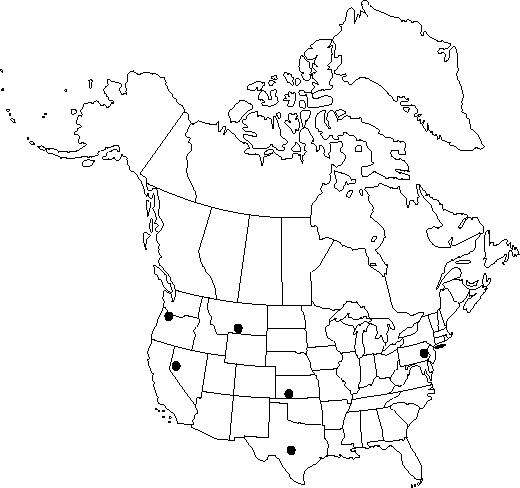Difference between revisions of "Glaucium corniculatum"
Fl. Jen., 13. 1781.
FNA>Volume Importer |
imported>Volume Importer |
||
| (One intermediate revision by the same user not shown) | |||
| Line 8: | Line 8: | ||
}} | }} | ||
|special_status={{Treatment/ID/Special_status | |special_status={{Treatment/ID/Special_status | ||
| − | |code= | + | |code=W2 |
| − | |label= | + | |label= |
}}{{Treatment/ID/Special_status | }}{{Treatment/ID/Special_status | ||
|code=I | |code=I | ||
| Line 36: | Line 36: | ||
|elevation=0-1600 m | |elevation=0-1600 m | ||
|distribution=Kans.;Mont.;Nev.;N.Y.;Oreg.;Pa.;Tex.;Europe;sw Asia. | |distribution=Kans.;Mont.;Nev.;N.Y.;Oreg.;Pa.;Tex.;Europe;sw Asia. | ||
| + | |introduced=true | ||
|discussion=<p><i>Glaucium corniculatum</i> has been widely introduced outside its native Eurasian range as a crop weed and ballast waif. It can persist in a fairly broad range of climates and probably is established in North America more widely than existing herbarium records indicate.</p> | |discussion=<p><i>Glaucium corniculatum</i> has been widely introduced outside its native Eurasian range as a crop weed and ballast waif. It can persist in a fairly broad range of climates and probably is established in North America more widely than existing herbarium records indicate.</p> | ||
|tables= | |tables= | ||
| Line 59: | Line 60: | ||
|publication title=Fl. Jen., | |publication title=Fl. Jen., | ||
|publication year=1781 | |publication year=1781 | ||
| − | |special status= | + | |special status=W2;Introduced |
| − | |source xml=https:// | + | |source xml=https://bitbucket.org/aafc-mbb/fna-data-curation/src/2e0870ddd59836b60bcf96646a41e87ea5a5943a/coarse_grained_fna_xml/V3/V3_1056.xml |
|genus=Glaucium | |genus=Glaucium | ||
|species=Glaucium corniculatum | |species=Glaucium corniculatum | ||
Latest revision as of 21:45, 5 November 2020
Plants annual or occasionally biennial, to 5 dm. Stems branching. Leaves to 25 cm; basal few, blade glabrate to moderately pubescent; basal and proximal cauline with blade lyrate, 7-9-lobed; distal with blade ovate, not distinctly clasping stem (sometimes slightly cordate-clasping); margins deeply dentate. Flowers: pedicels stout, to 5 cm; sepals 15-30 mm; petals orange to reddish orange, usually with blackish basal spot, obovate, to 40 mm. Capsules sublinear, straight or slightly curved, to 25 cm, appressed- to ascending-pubescent or glabrate.
Phenology: Flowering late spring–summer.
Habitat: Open shores, fields, pastures, and canyon slopes
Elevation: 0-1600 m
Distribution

Introduced; Kans., Mont., Nev., N.Y., Oreg., Pa., Tex., Europe, sw Asia.
Discussion
Glaucium corniculatum has been widely introduced outside its native Eurasian range as a crop weed and ballast waif. It can persist in a fairly broad range of climates and probably is established in North America more widely than existing herbarium records indicate.
Selected References
None.